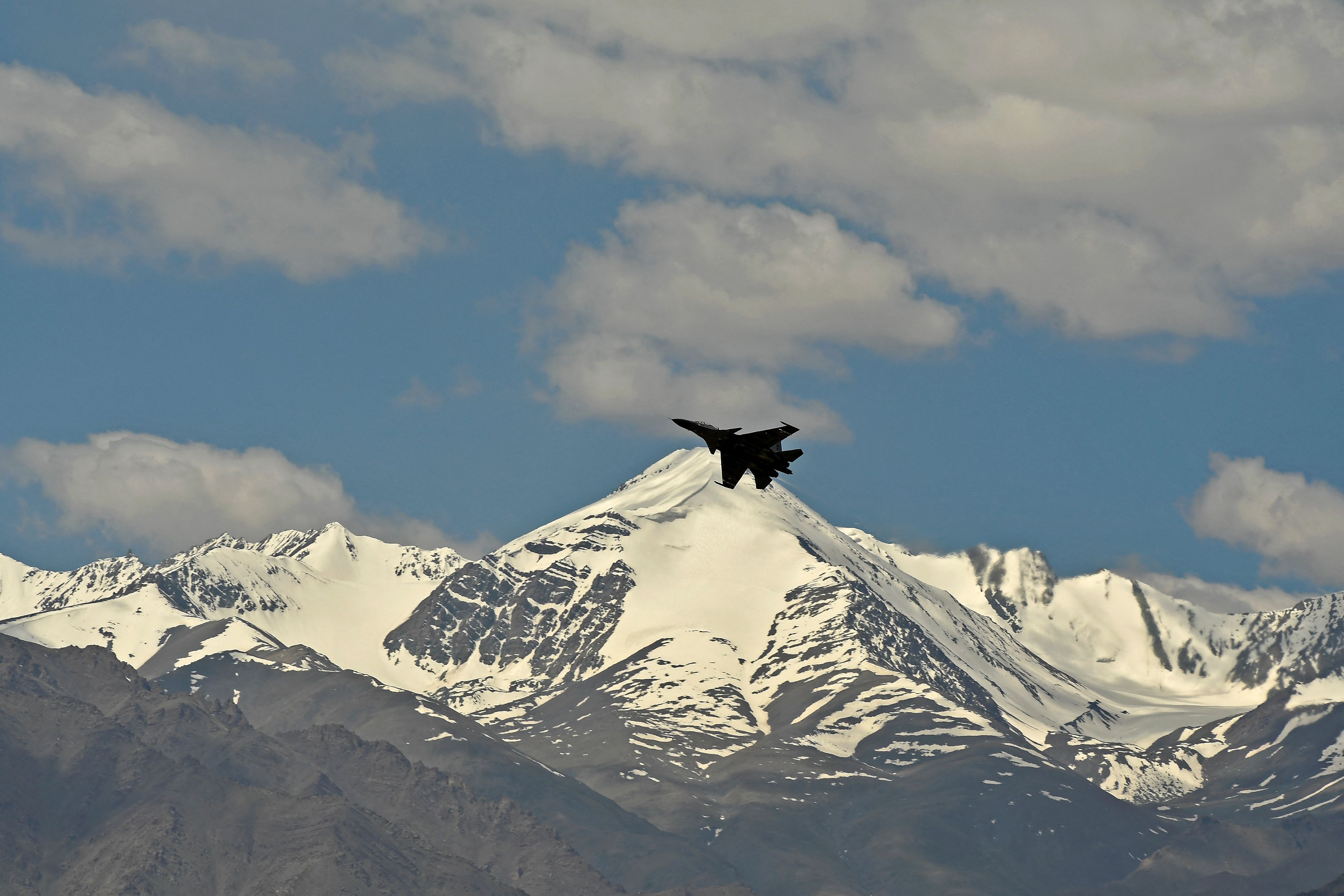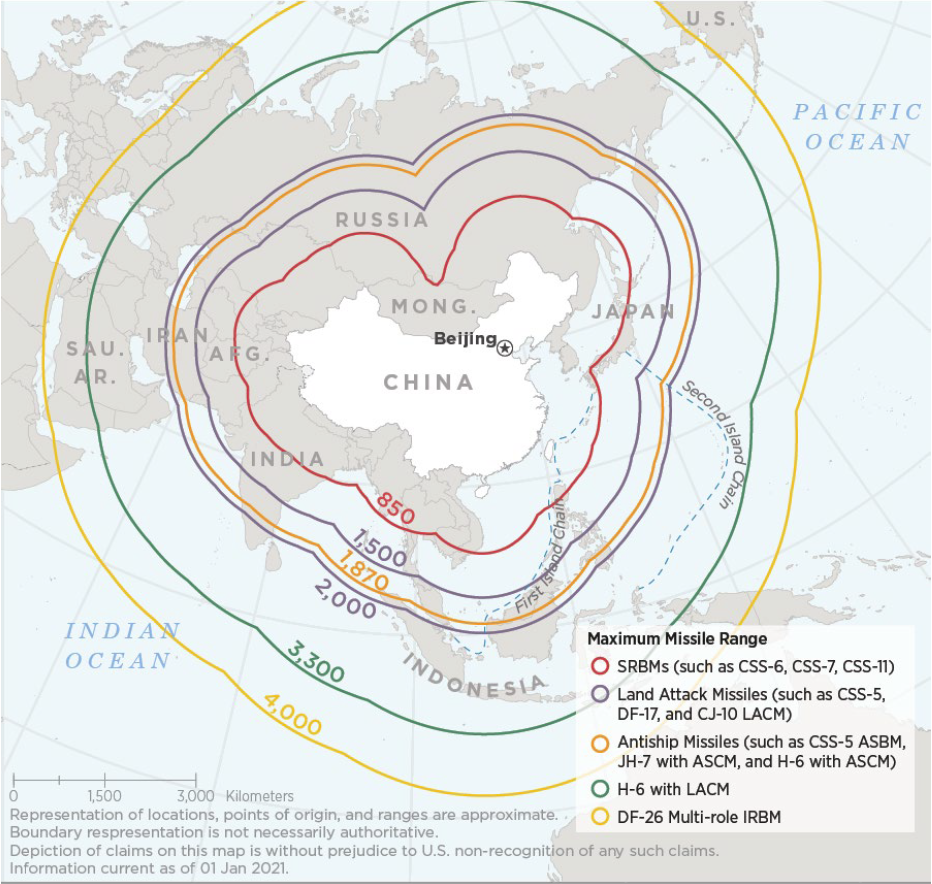beijingwalker
ELITE MEMBER

- Joined
- Nov 4, 2011
- Messages
- 65,187
- Reaction score
- -55
- Country
- Location
China's Air Power Grows Behind Disputed Border With India
Oct 26, 2023 at 8:19 AM EDT
China's People's Liberation Army (PLA) is expanding its air power by building a dual-use airport and a series of heliports at high-altitude locations along its border with India in Xinjiang.
The 2023 China Military Power report by the U.S. Department of Defense has underscored the rapid expansion of PLA sites in the Xinjiang province and other border areas.
A separate study by the U.S. National Geospatial Agency (NGA) and Johns Hopkins University has reported that the PLA is carrying out an "astounding" amount of work on aviation infrastructure.
"The sheer number of new or upgraded airports/heliports near the Sino-Indian border is astounding," said the NGA-Johns Hopkins report.
These developments have implications for U.S. security interests in the region. If fully developed, they would allow the PLA to project power across parts of Central Asia, which was not possible before.

An analysis of China's air power expansion in Tibet and Xinjiang by the Center for Strategic and International Studies.
In June 2020, soldiers from China and India clashed in the Galwan Valley region of Eastern Ladakh, leading to deaths on both sides. Since 2020, the two nations have deployed a large number of troops at their border and held 19 sets of military-level talks to solve the dispute—with minimal progress. The military stand-off continues.
Newsweek has contacted China's embassy in New Delhi for comment via email.
From mountainous Xinjiang to coastal regions near the Taiwan Strait, there has been a massive expansion in China's military infrastructure since 2016, when President Xi Jinping announced a reorganization of the PLA.
Rakesh Sharma, senior fellow at the Vivekananda International Foundation, a think tank in New Delhi, told Newsweek the PLA's intention is to adopt an offensive posture towards India.
"With a large number of heliports and helipads made by China in Southern Xinjiang, which is opposite Eastern Ladakh, the intent is offensive. For attack helicopters, command and control, heavy lift for special forces and logistics support, the helicopters can be optimal," Sharma said.
Despite the difficulties of operating at such altitudes, the PLA is working on a new dual-use military-civilian airport and five heliports near the disputed Xinjiang-Ladakh line.
The NGA-John Hopkins report added that "all heliports above 14,500 feet MSL [mean sea level] remain under construction." They may be completed in the next 18-24 months, the report said.
Another military-civilian airport named Ngari-Burang is under construction in the Ngari prefecture of Tibet, less than 25 miles from the border with India. It has a landing strip for fighter jets at an altitude of 4,200 meters, though the terrain is difficult for a fighter jet.
The NGA believes that although Beijing's ultimate plan for the heliports and dual-use airports is unclear, the Chinese military could be preparing for a future in which it has the capability to project power across large parts of South and Central Asia.
"If executed well, the improved network could provide a quicker military response to conflicts or disasters and improve military logistics along the border," said the NGA-Johns Hopkins report.
The study described the PLA as potentially "overzealous" in its force projection in the region, but without a clear strategy on the types of aircraft to be used.
"Findings suggest that this expansion may be an overzealous force projection mechanism underpinned by a slow-developing domestic rotorcraft capability," it said.
At present, China's military helicopters may not be capable of operating at high altitude during a potential conflict with India, according to the NGA.
However, Sharma pointed out that the PLA is developing and testing new technology.
He said: "China's AC313A helicopter conducted its maiden flight on May 17. With improved engines and high-altitude performance, the Chinese military will also use this helicopter, and an upgraded version of the Z-8 helicopter is in PLA service."
He added: "The Z-20 helicopter airlifted an 8×8 Lynx all-terrain vehicle during a recent exercise. The helicopter was attached to an aerial assault brigade of the People's Liberation Army."

 www.newsweek.com
www.newsweek.com
Oct 26, 2023 at 8:19 AM EDT
China's People's Liberation Army (PLA) is expanding its air power by building a dual-use airport and a series of heliports at high-altitude locations along its border with India in Xinjiang.
The 2023 China Military Power report by the U.S. Department of Defense has underscored the rapid expansion of PLA sites in the Xinjiang province and other border areas.
A separate study by the U.S. National Geospatial Agency (NGA) and Johns Hopkins University has reported that the PLA is carrying out an "astounding" amount of work on aviation infrastructure.
"The sheer number of new or upgraded airports/heliports near the Sino-Indian border is astounding," said the NGA-Johns Hopkins report.
These developments have implications for U.S. security interests in the region. If fully developed, they would allow the PLA to project power across parts of Central Asia, which was not possible before.
An analysis of China's air power expansion in Tibet and Xinjiang by the Center for Strategic and International Studies.
In June 2020, soldiers from China and India clashed in the Galwan Valley region of Eastern Ladakh, leading to deaths on both sides. Since 2020, the two nations have deployed a large number of troops at their border and held 19 sets of military-level talks to solve the dispute—with minimal progress. The military stand-off continues.
Newsweek has contacted China's embassy in New Delhi for comment via email.
From mountainous Xinjiang to coastal regions near the Taiwan Strait, there has been a massive expansion in China's military infrastructure since 2016, when President Xi Jinping announced a reorganization of the PLA.
Rakesh Sharma, senior fellow at the Vivekananda International Foundation, a think tank in New Delhi, told Newsweek the PLA's intention is to adopt an offensive posture towards India.
"With a large number of heliports and helipads made by China in Southern Xinjiang, which is opposite Eastern Ladakh, the intent is offensive. For attack helicopters, command and control, heavy lift for special forces and logistics support, the helicopters can be optimal," Sharma said.
Despite the difficulties of operating at such altitudes, the PLA is working on a new dual-use military-civilian airport and five heliports near the disputed Xinjiang-Ladakh line.
The NGA-John Hopkins report added that "all heliports above 14,500 feet MSL [mean sea level] remain under construction." They may be completed in the next 18-24 months, the report said.
Another military-civilian airport named Ngari-Burang is under construction in the Ngari prefecture of Tibet, less than 25 miles from the border with India. It has a landing strip for fighter jets at an altitude of 4,200 meters, though the terrain is difficult for a fighter jet.
The NGA believes that although Beijing's ultimate plan for the heliports and dual-use airports is unclear, the Chinese military could be preparing for a future in which it has the capability to project power across large parts of South and Central Asia.
"If executed well, the improved network could provide a quicker military response to conflicts or disasters and improve military logistics along the border," said the NGA-Johns Hopkins report.
The study described the PLA as potentially "overzealous" in its force projection in the region, but without a clear strategy on the types of aircraft to be used.
"Findings suggest that this expansion may be an overzealous force projection mechanism underpinned by a slow-developing domestic rotorcraft capability," it said.
At present, China's military helicopters may not be capable of operating at high altitude during a potential conflict with India, according to the NGA.
However, Sharma pointed out that the PLA is developing and testing new technology.
He said: "China's AC313A helicopter conducted its maiden flight on May 17. With improved engines and high-altitude performance, the Chinese military will also use this helicopter, and an upgraded version of the Z-8 helicopter is in PLA service."
He added: "The Z-20 helicopter airlifted an 8×8 Lynx all-terrain vehicle during a recent exercise. The helicopter was attached to an aerial assault brigade of the People's Liberation Army."

China's air power grows behind disputed border with India
The People's Liberation Army is building and upgrading airports and heliports in Xinjiang and other border areas, according to U.S. observers.









